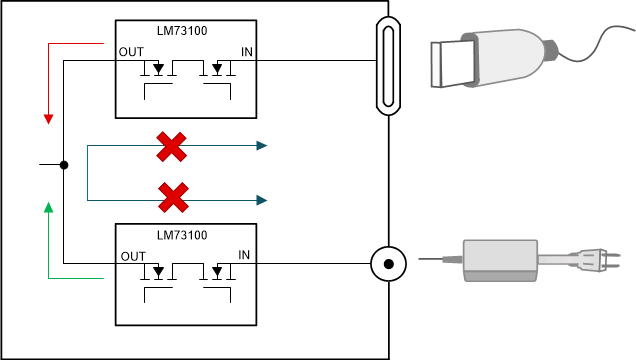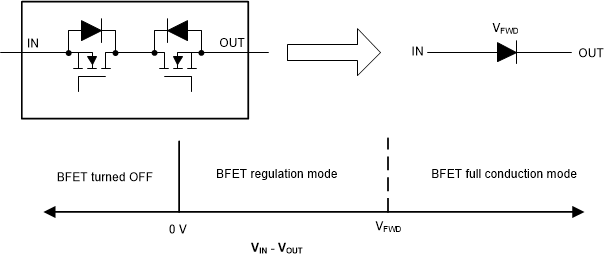SLVAEY2A August 2020 – October 2020 LM7310 , TPS25947
4 Linear ORing is True Reverse Current Blocking (RCB)
When multiple USB Type-C ports could supply or receive power, robust RCB is required to prevent current leakage between adjacent ports as shown in Figure 4-1. Without RCB, any buildup of reverse current leakge could cause permanent damage to the entire system. A typical slow ramp-up test can identify current leakage. If present, increasing the power on one port would charge up the adjacent port.
 Figure 4-1 Adjacent USB Type-C
Ports
Figure 4-1 Adjacent USB Type-C
PortsRCB is implemented using back-to-back FETs. Shown in Figure 4-2, switching off the blocking FET allows the device to block reverse current from output to input.
 Figure 4-2 Reverse Current Blocking
Response
Figure 4-2 Reverse Current Blocking
ResponseConventionally, a comparator controls the switching of the FET for RCB. Reverse current is allowed to build up as long as the current does not exceed the comparator threshold. Linear ORing provides true RCB by adjusting the resistance of the blocking FET to maintain a constant voltage across it. If forward current is increasing, the resistance of the blocking FET is reduced. If forward current is decreasing, the resistance of the blocking FET is increased, eventually shutting off the blocking FET before reverse conduction occurs. Linear ORing forces the device to go from forward conduction to a 0 point without allowing reverse conduction to ever occur.